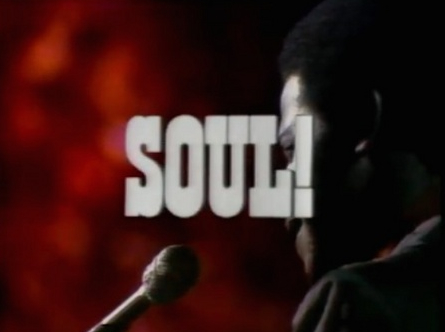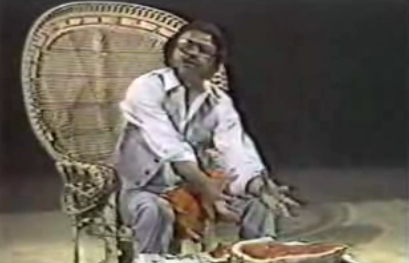Now that TV offers pretty much everything all the time for everybody, it's hard to imagine a time when it didn't. But on into the 1970s, with just three commercial networks and a public TV system only beginning to take shape -- and with cable still serving as a delivery device, not a content originator -- whole swaths of the American population were essentially ignored, both as viewers and as performers/producers.
 Which makes the online arrival of SOUL! this month a most welcome reminder that our TV heritage has more to offer than incessant repeats of Andy Griffith and Bonanza. This groundbreaking public TV music series, which ran 1968-73 out of New York's WNET/13, showcased a wide range of black talent left out of the era's Ed Sullivan Showvariety mix of Top 40 singers, Broadway stars and Topo Gigio the mouse puppet.
Which makes the online arrival of SOUL! this month a most welcome reminder that our TV heritage has more to offer than incessant repeats of Andy Griffith and Bonanza. This groundbreaking public TV music series, which ran 1968-73 out of New York's WNET/13, showcased a wide range of black talent left out of the era's Ed Sullivan Showvariety mix of Top 40 singers, Broadway stars and Topo Gigio the mouse puppet.
Six full episodes of SOUL! now streaming online at WNET's web site illustrate how the series covered the musical waterfront -- jazz (sax man Rahsaan Roland Kirk, drummer Max Roach), R&B/soul (songwriter-singers Ashford & Simpson), a cappella (The Persuasions), Latin (Tito Puente, Willie Colon), and the mashup of pop, jazz and soul known as Earth, Wind & Fire.
The series was even produced by a black crew, at a time TV trades were hardly models of inclusion. They knew enough to let the acts not only play but talk, too, about society and their own lives, and how the two fit together in a tumultuous era of explosive change.
The SOUL! site includes an episode guide, original press releases about this landmark arrival, and links to further exploration. Its web pages promise more features in the future (about the hosts, for instance), and hopefully, more vintage video, too.
Also up from the archives at thirteen.org: Broadcasting While Black, which widens the focus to other New York/national productions. A must-read introduction puts the shows in their historical context in the post-civil rights era -- a time of hard-fought struggle hard to fathom today. That leads into streams of further landmarks, like the current affairs report Black Journal and the grassroots street show Inside Bed-Stuy.
 There's also a list of black shows from around the country, and links to learn more, not to mention additional streaming video, including amazing clips from Petey Greene's Washington. Culled from the D.C. show hosted by the tell-it-like-it-is ex-con portrayed in Don Cheadle's film Talk to Me,the raw segments include How to Eat Watermelon and a frank chat with a young Howard Stern -- in blackface.
There's also a list of black shows from around the country, and links to learn more, not to mention additional streaming video, including amazing clips from Petey Greene's Washington. Culled from the D.C. show hosted by the tell-it-like-it-is ex-con portrayed in Don Cheadle's film Talk to Me,the raw segments include How to Eat Watermelon and a frank chat with a young Howard Stern -- in blackface.
Black TV wasn't always bling videos aimed at harvesting commercial dollars. In the barrier-smashing era of "black liberation" a generation (or two) ago, an entire people who'd never been able to tell their stories to the wider world finally got the chance. And they exploited it, boldly and smartly. No Coffy or Truck Turner here. Not that there's anything wrong with pure entertainment. But these often bare-bones shows aspired to do more -- to inform, illuminate, celebrate and enlighten.
They were the bridge to the multicultural future we now inhabit.